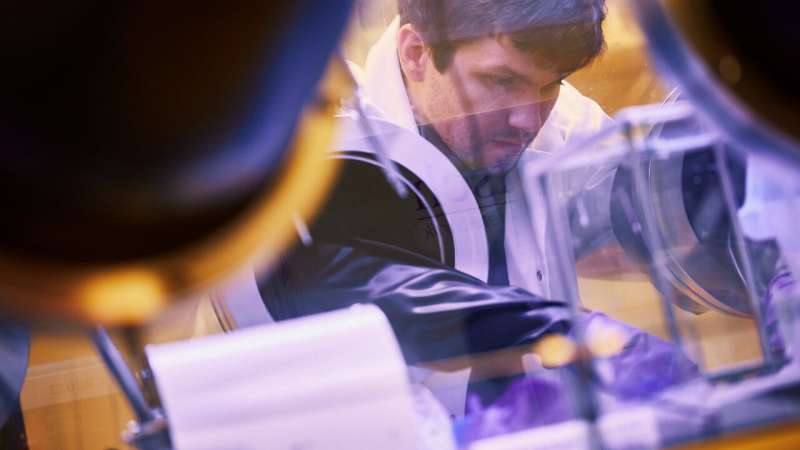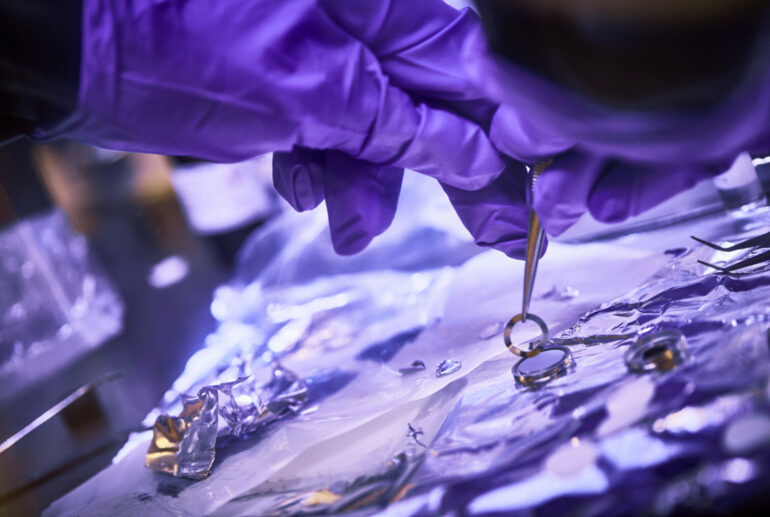Metal batteries have the potential to deliver more energy, at a lower weight, than the popular lithium-ion battery. The problem, however, is that the technology currently has too short a lifespan due to the highly reactive nature of the lithium metal within these batteries.
New research from Chalmers University of Technology, Sweden, shows where the problems lie and how to overcome them by creating the metal electrode directly in the battery cell.
Lithium-ion batteries are the most popular battery option today, but in a society facing widespread electrification, new battery technologies are needed that can provide more energy per weight or volume. This is important for the development of longer-range electric cars or electric aircraft for shorter distances.
Therefore, attention is now turning to batteries with metal electrodes, where the graphite electrode of the lithium-ion battery has been replaced by lithium metal. For example, solid-state batteries, seen as one of the most promising upcoming technologies, use a metal electrode and provide cells that deliver a greater amount of energy than today’s lithium-ion battery.
However, metal electrodes suffer from one problem—the metal is reactive, which means it reacts easily with the surroundings and it is difficult to create a long-lasting cell.
Metal batteries are one of the focus areas for Professor Aleksandar Matic’s research group at the Department of Physics at Chalmers. They were the first research team to use 3D X-rays to monitor how the lithium in a lithium metal battery behaves in real time during use . These experiments have led to new insights into the crucial problem that arises in this type of battery—namely that the lithium forms ‘dendrites’, or uneven structures during charging and discharging, which over time affects the stability and function of the battery.
These are insights that the researchers have continued to build upon. They present their research results on metal batteries in the Journal of The Electrochemical Society, showing a simple way to avoid the formation of a surface layer on the reactive metal electrode, which deteriorates the cycle life of the battery. Their results point to future strategies for making metal batteries both more stable and safer.
The paper is titled “Electrochemical Signatures of Potassium Plating and Stripping.”
“We work in a very inert environment, but even there the metal finds something to react with and a surface layer is formed, which affects how the metal behaves in the battery,” says Josef Rizell, doctoral student at the Department of Physics at Chalmers, who is the lead author of the recent paper together with Aleksandar Matic.
“However, we have seen that these reactions can actually be avoided by very simple means: instead of dealing with the reactive electrode materials outside the battery, we create our electrode inside the battery through a process called electroplating. This allows us to avoid the reactive metal reacting with the environment, which is an advantage as we get a more predictable and stable electrode.”

In the battery lab at the Department of Physics at Chalmers University of Technology, Sweden, Josef Rizell is working on developing the batteries of the future. The work is done in so-called ‘glove boxes’, an enclosed and inert environment where the materials are exposed to as little external influence as possible. © Chalmers University of Technology | Henrik Sandsjö
Finding promising strategies for battery performance
“A fundamental understanding of the processes that take place in and around the electrodes of a battery—when we charge and discharge—is crucial for developing better batteries in the future. A battery is very complex, and many different things happen in parallel, making the system difficult to analyze,” says Josef Rizell.
“We have tried to isolate each reaction or process separately and investigate how that particular process affects the functioning of the battery. The aim is to better understand what happens at the metal electrode when we use a battery and thereby which strategies are most promising to make them work better.”
The study is one of many ongoing in battery research at Chalmers. Aleksandar Matic is Chalmers’ Director of Compel, a government initiative.
“This type of fundamental research is important to pave the way for new battery concepts and technologies. Without it, you can only try things out, like orientating without a map. This is where we lay the foundation for future innovations that contribute to sustainable societal development. Batteries are already a key part of that development, and their importance will only increase in the future,” says Aleksandar Matic.
Metal can be produced electrochemically through a process called electroplating. A voltage drives electrons to an electrode and metal is formed on the surface of the electrode by the reaction of the electrons with ions from the electrolyte.
When a metal battery is recharged, it is through this very reaction. The same process can also be used to produce a metal electrode directly in the battery cell. By creating the metal electrode inside the battery, the metal never has the opportunity to react with impurities outside the battery and has a better and more stable surface layer.
More information:
Josef Rizell et al, Electrochemical Signatures of Potassium Plating and Stripping, Journal of The Electrochemical Society (2024). DOI: 10.1149/1945-7111/ad2593
Provided by
Chalmers University of Technology
Citation:
Electroplating strategy could lead to safer, more stable metal batteries (2024, July 18)



